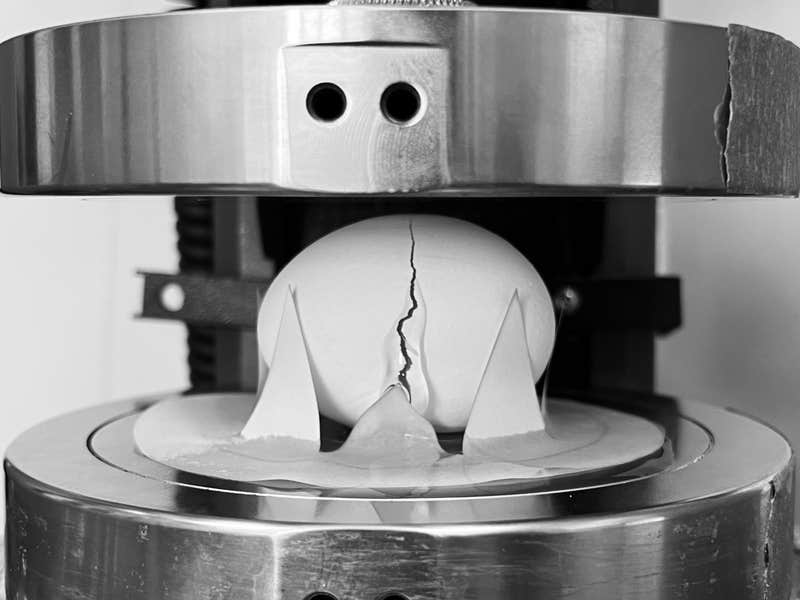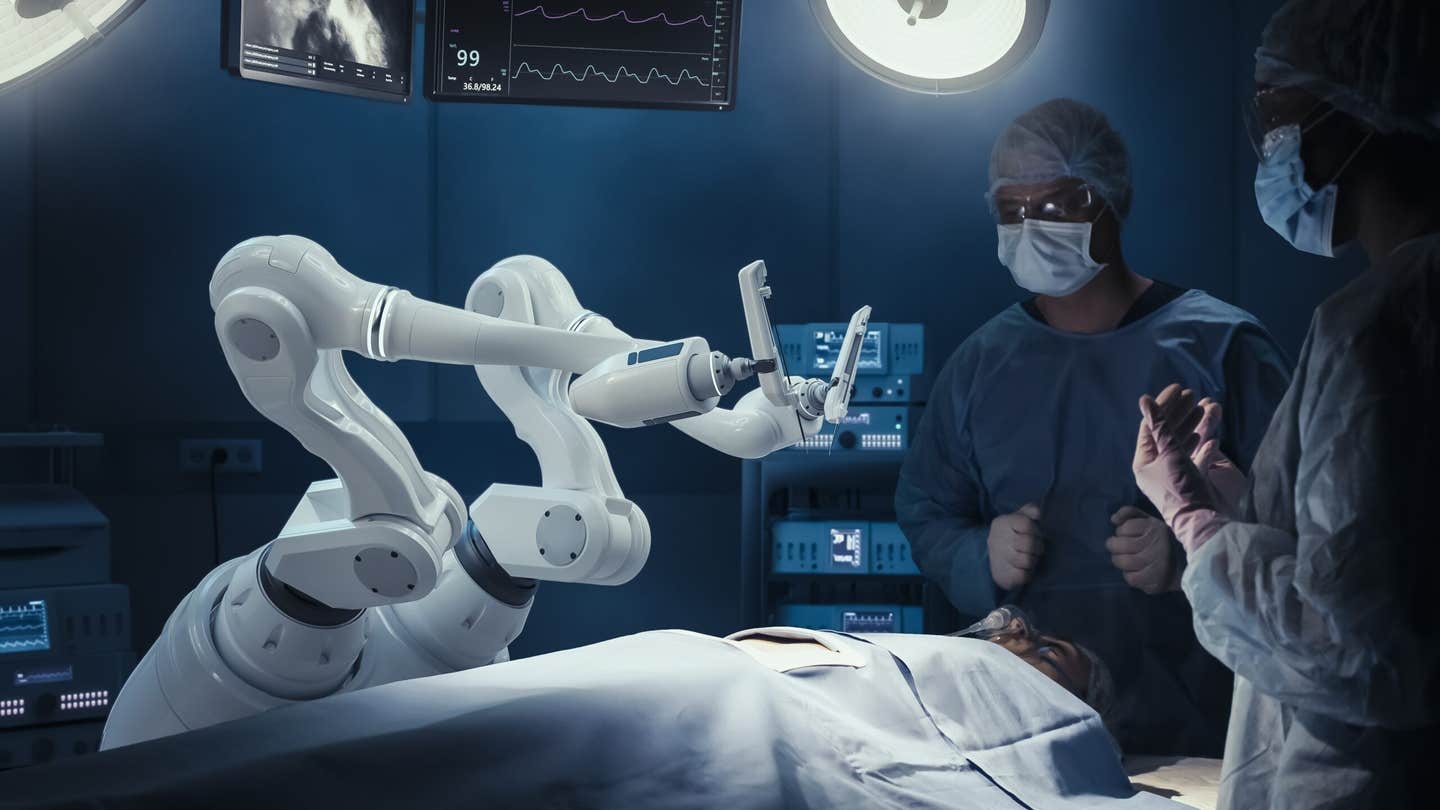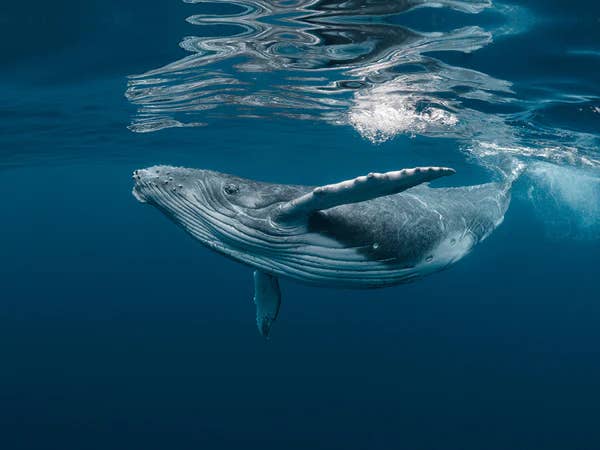Science myth cracked: Eggshells are actually strongest on their sides
For centuries, people believed that its strongest orientation was standing upright on its end.

Researchers’ experiments revealed that cracking an egg required the same amount of force, whether it was positioned vertically or horizontally. However, a key difference emerged: Horizontally oriented eggs compressed more before breaking, indicating they were more compliant under pressure. (CREDIT: MIT)
An egg might look delicate, but its shell is a marvel of natural engineering. For centuries, people believed that its strongest orientation was standing upright on its end. The idea seems to make sense—after all, arches and domes in ancient buildings are strongest when shaped like a tall curve.
This belief became widespread, making its way into science classrooms and STEM competitions, especially the well-known “egg drop challenge,” where students build devices to protect an egg from breaking when dropped from a height.
But this long-held belief has now cracked under pressure.
Cracking the Myth in the Classroom
Every year, first-year students in civil and environmental engineering at MIT take part in a fun yet educational tradition. They compete in the egg drop challenge, where they build contraptions to protect eggs from shattering on impact. The event, led by Professor Tal Cohen and her team, is designed to teach students about impact forces, material strength, and energy absorption.
For years, Cohen’s group followed what appeared to be solid advice: always position the egg vertically for the best chance of survival. But a few years ago, they began to doubt this "truth."
That curiosity sparked an experiment using leftover eggs from the annual event. Instead of finding proof for the old rule, their data showed something surprising. The orientation didn’t clearly favor the vertical position. This small finding opened the door to a much deeper investigation.
Sideways for Strength
To dig deeper, Cohen’s team conducted more than 200 tests. They used two kinds of experiments: static compression and dynamic drop tests. In static tests, eggs were held still while increasing pressure was applied until they cracked. In the drop tests, eggs were released from various heights to see how they responded to real-world impacts.
Related Stories
Avishai Jeselsohn, an undergraduate researcher, helped design the static tests. He explained that they used thin paper to support the eggs and orient them either vertically or horizontally. The team expected to find that the upright egg would resist more force before breaking.
But the results surprised them.
Joseph Bonavia, a PhD candidate on the team, noticed something key. “The force to break the egg was the same either way,” he said. “But the horizontal egg squished more before it broke.”
This meant horizontal eggs could absorb more energy before failing. Using advanced modeling and simulations, the team confirmed what the data showed. The ability to flex and bend gave horizontal eggs an edge when it came to surviving impact.
Drop Tests Tell the Truth
Once the lab tests suggested horizontal eggs had more toughness, the team designed a special drop test. Using 3D-printed holders and solenoids for consistent release, they dropped eggs from different heights. This time, they tracked how often eggs broke depending on how they were positioned.
Again, the data was clear. Horizontal eggs broke less often than vertical ones.
Jeselsohn said the drop tests backed up what they saw in the static trials. Both orientations handled similar peak forces, but the sideways ones were better at absorbing energy. This flexible response helped prevent cracks.
The idea is similar to how people land after jumping. Bending your knees makes the landing softer. The legs aren’t stronger when bent, but they’re better at taking the hit. In the same way, a horizontally placed egg might not be stiffer, but it is tougher when it comes to withstanding impact.
Rethinking What We “Know”
This study didn’t just flip over a belief about eggs—it sent a message about science itself. Many classroom materials, internet videos, and teacher guides have repeated the idea that vertical orientation is stronger. This idea likely came from how arches carry force in old structures. But applying that principle to eggs turns out to be a mistake.
Jeselsohn noted how even experts were surprised. “It’s a widespread, accepted belief, referenced in many online sources,” he said.
PhD candidate Brendan Unikewicz added that cracking an egg for breakfast isn’t the same as how an egg handles a drop. When cooking, you apply focused pressure to one small spot to break the shell. That’s different from what happens during impact, where force spreads across the entire shell.
Bonavia explained that what matters is not just how strong something is, but how it handles energy. “Toughness isn’t just about resisting force — it’s about how that force is dissipated,” he said.
It’s an important distinction, one that changes how students and educators should think about structural resilience.
From Shells to Skulls
The insights from this study go far beyond kitchen counters and science fairs. Shells are everywhere in nature, protecting the soft bodies of animals like turtles, mollusks, and even humans. The human skull, for example, works in a similar way, absorbing energy to protect the brain.
Understanding how shell-like structures fail under pressure could help improve helmets, body armor, and even drug delivery capsules. By rethinking how these forms handle impact, engineers might develop better, safer designs.
This study, published in Communications Physics, included researchers from MIT and Tel Aviv University. Along with Cohen, the team included Antony Sutanto, Suhib Abu-Qbeitah, Jeselsohn, Bonavia, Unikewicz, Stephen Rudolph, Hudson Borja da Rocha, and Kiana Naghibzadeh. Funding came from the U.S. Office of Naval Research and the National Science Foundation.
David Taylor, an emeritus professor at Trinity College Dublin, who wasn’t involved in the study, praised the work. He said it’s a great example of why scientists should always question “received wisdom.” Often, old ideas are repeated for years without being tested.
Taylor added that it can be hard to get support for research that challenges mainstream thinking. But discoveries like this one show why it’s worth the effort.
A Lesson in Curiosity
In the end, this study delivers a valuable lesson: being curious matters. The idea that a sideways egg can survive a drop better than one standing tall reminds us to think critically and test even the most familiar assumptions.
Cohen hopes students will take that lesson to heart. “We hope our work inspires students to stay curious, question even the most familiar assumptions, and continue thinking critically about the physical world around them,” she said.
That’s the real reward of science—not just finding answers, but asking better questions.
Note: The article above provided above by The Brighter Side of News.
Like these kind of feel good stories? Get The Brighter Side of News' newsletter.



